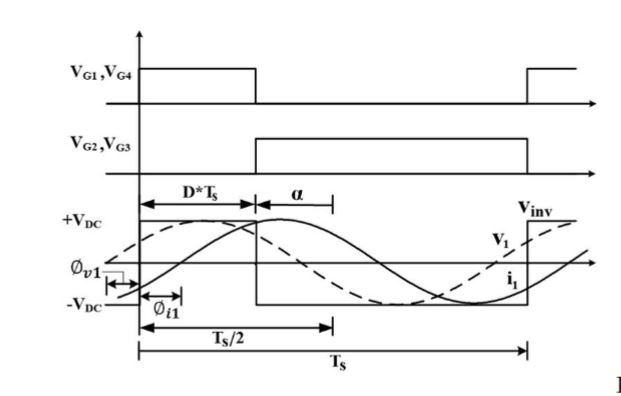Output Voltage Control of the SP topology IPT system based on Primary side Controller operating at ZVS
Main Article Content
Abstract
This paper presents a technique to control the output voltage of a series-parallel (SP) topology inductive power transfer (IPT) system using only a controller, located on the primary side. This reduces the cost, size, complexity and loss of the system compared to conventional IPT dual-side controllers. An asymmetrical duty cycle control (ADC) of full-bridge inverters was used to control the DC output voltage to its designed value. Additionally, a zero voltage switching (ZVS) operation can be obtained at all power levels by varying the switching frequency of the inverter. Theoretical analysis was performed through a mutual inductance coupling model and verified by computer simulation. Experimental results of the circular magnetic structure IPT system with an adjustable air-gap confirm the validity of the proposed controller. The system efficiency was improved throughout the operation and the improvement became obvious as the output power was decreased.
Article Details
References
G. A. Covic and J. T Boys, “Inductive power transfer,” Proc. IEEE, vol. 101, no. 6, pp. 1276–1289, 2013.
I. Mayordomo, T. Drager, P. Spies, J. Bernhard, and A. Pflaum, “An overview of technical challenges and advances of inductive wireless power transmission,” Proc. IEEE, vol. 101, no. 6, pp. 1302–1311, 2013.
F. Musavi and W. Eberle, “Overview of wireless power transfer technologies for electric vehicle battery charging,” IET Power Electron., vol. 7, no. 1, pp. 60–66, 2014.
K. Aditya and S. Williamson, “Design considerations for loosely coupled inductive power transfer (IPT) system for electric vehicle battery charging - A comprehensive review,” in Proc. Transportation Electrification Conference and Expo (ITEC), pp. 1-6, 2014.
C. S. Wang, O. H. Stielau, G. A. Covic. “Load models and their application in the design of loosely coupled inductive power transfer systems,” in Proc. Int. Conf. Power System Technology, vol. 2, pp. 1053–1058, 2000.
C. S. Wang, G. A. Covic, O. H. Stielau. “Power transfer capability and bifurcation phenomena of loosely coupled inductive power transfer systems,” IEEE Trans. Ind. Electron., vol. 51, no. 1, pp. 148–157, 2004.
S. Nutwong, A. Sangswang, and S. Naetiladdanon, “Design of the wireless power transfer system with uncompensated secondary to increase power transfer capability,” in Proc. 8th IET Int. Conf. Power Electron. Mach. Drives (PEMD), 2016.
W. Zhang, S. C. Wong, C. K. Tse, and Q. H. Chen, “Analysis and comparison of secondary series- and parallel-compensated inductive power transfer systems operating for optimal efficiency and load-independent voltage-transfer ratio,” IEEE Trans. Power Electron., vol. 29, no. 6, pp. 2979–2990, 2014.
T. Diekhans and R. W. De Doncker, “A Dual-Side Controlled Inductive Power Transfer System Optimized for Large Coupling Factor Variations and Partial Load,” IEEE Trans. Power Electron., vol. 30, pp. 6320-6328, 2015.
H. H. Wu, A. Gilchrist, K. D. Sealy, and D. Bronson, “A high efficiency 5 kW inductive charger for EVs using dual side control,” IEEE Trans. Ind. Informat., vol. 8, no. 3, pp. 585–595, 2012.
P. Si,A. P.Hu, S. Malpas, and D. Budgett, “A frequency control method for regulating wireless power to implantable devices,” IEEE Trans. Biomed.Circuits Syst., vol. 2, no.1, pp. 22–29, 2008.
H. L. Li, A. P. Hu and G. A. Covic, “A power flow control method on primary side for a CPT system,” in Proc. IEEE, The International power electronics conference (IPEC), pp. 1050-1055, 2010.
K. Aditya, S. S. Williamson, “Advanced controller design for a series-series compensated inductive power transfer charging infrastructure using asymmetrical clamped mode control,” in Proc. IEEE, Applied Power Electronics Conference and Exposition (APEC), pp. 2718- 2724, 2015.
W. Chwei-Sen, O. H. Stielau, and G. A. Covic, “Design considerations for a contactless electric vehicle battery charger,” IEEE Trans. Ind. Electron., vol. 52, no. 5, pp. 1308–1314, 2005.


